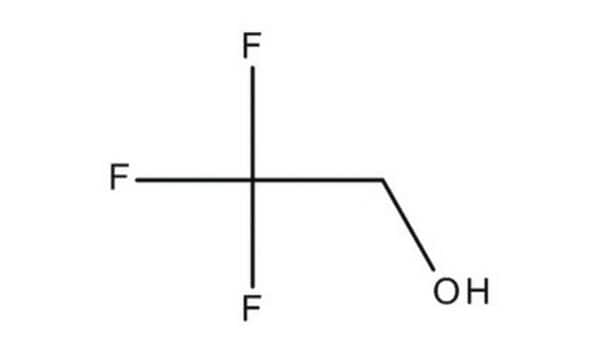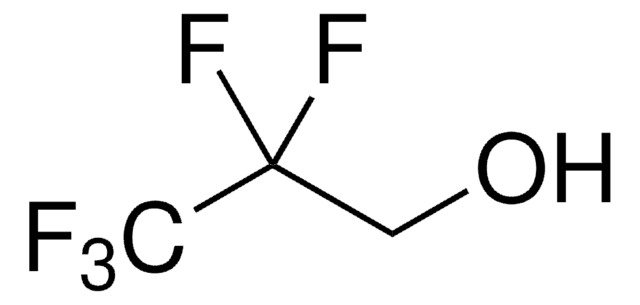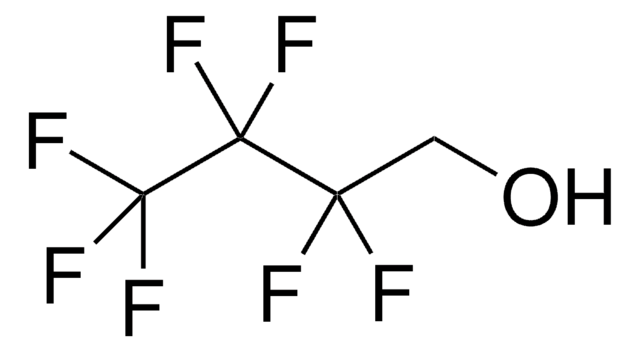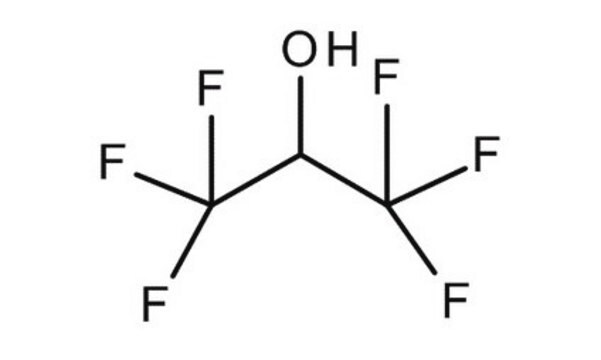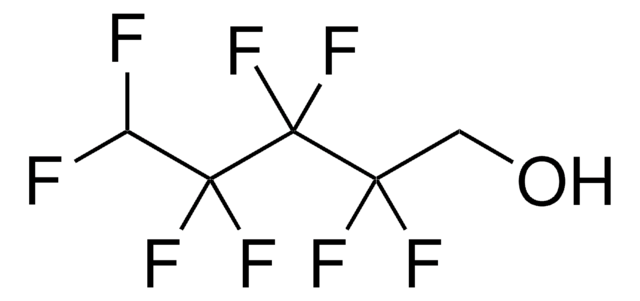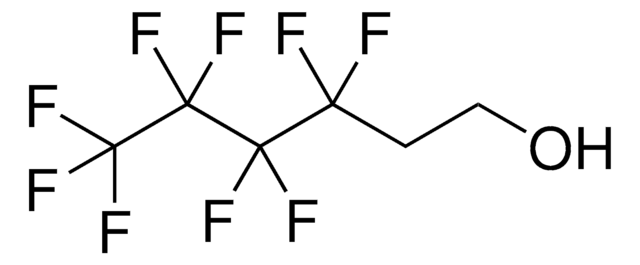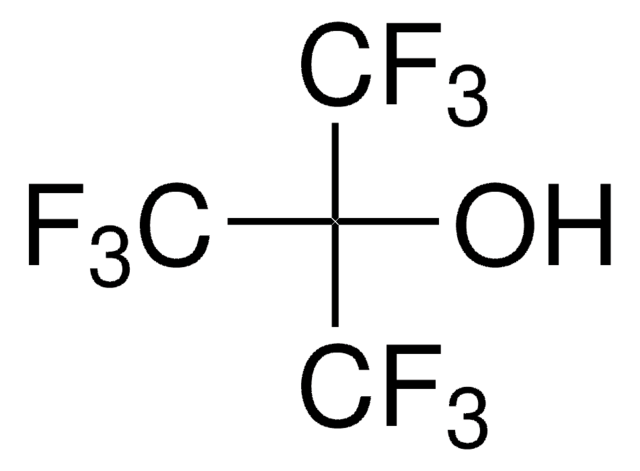T63002
2,2,2-Trifluoroethanol
ReagentPlus®, ≥99%
Sinónimos:
Trifluoroethyl alcohol
About This Item
Productos recomendados
vapor density
3.5 (vs air)
vapor pressure
70 mmHg ( 25 °C)
product line
ReagentPlus®
assay
≥99%
form
liquid
autoignition temp.
~896 °F
expl. lim.
42 %
refractive index
n20/D 1.3 (lit.)
pH
7
bp
77-80 °C (lit.)
mp
−44 °C (lit.)
density
1.373 g/mL at 25 °C (lit.)
SMILES string
OCC(F)(F)F
InChI
1S/C2H3F3O/c3-2(4,5)1-6/h6H,1H2
InChI key
RHQDFWAXVIIEBN-UHFFFAOYSA-N
¿Está buscando productos similares? Visita Guía de comparación de productos
General description
Application
- In the synthesis of 2-amino-3-cyano-4H-chromene and tetrahydrobenzo[b]pyran derivatives by catalyst free one-pot condensation of aldehydes, malononitrile and resorcinol or dimedone.
- In the N-formylation of amines with formic acid in the presence of heterogeneous ZIF-8 (zeolitic imidazolate framework) catalyst.
- In the preparation of 2-substituted-2,3-dihydro-4(1H)-quinazolinone derivatives by condensation of anthranilamide with alkyl, aryl, or heteroaryl ketones or aldehydes.
- In the mild and selective oxidation of sulfur compounds using H2O2(hydrogen peroxide).
Features and Benefits
Legal Information
signalword
Danger
Hazard Classifications
Acute Tox. 3 Inhalation - Acute Tox. 3 Oral - Eye Dam. 1 - Flam. Liq. 3 - Repr. 1B - STOT RE 2 Inhalation
target_organs
Blood
Storage Class
3 - Flammable liquids
wgk_germany
WGK 1
flash_point_f
86.0 °F - closed cup
flash_point_c
30 °C - closed cup
Certificados de análisis (COA)
Busque Certificados de análisis (COA) introduciendo el número de lote del producto. Los números de lote se encuentran en la etiqueta del producto después de las palabras «Lot» o «Batch»
¿Ya tiene este producto?
Encuentre la documentación para los productos que ha comprado recientemente en la Biblioteca de documentos.
Los clientes también vieron
Nuestro equipo de científicos tiene experiencia en todas las áreas de investigación: Ciencias de la vida, Ciencia de los materiales, Síntesis química, Cromatografía, Analítica y muchas otras.
Póngase en contacto con el Servicio técnico